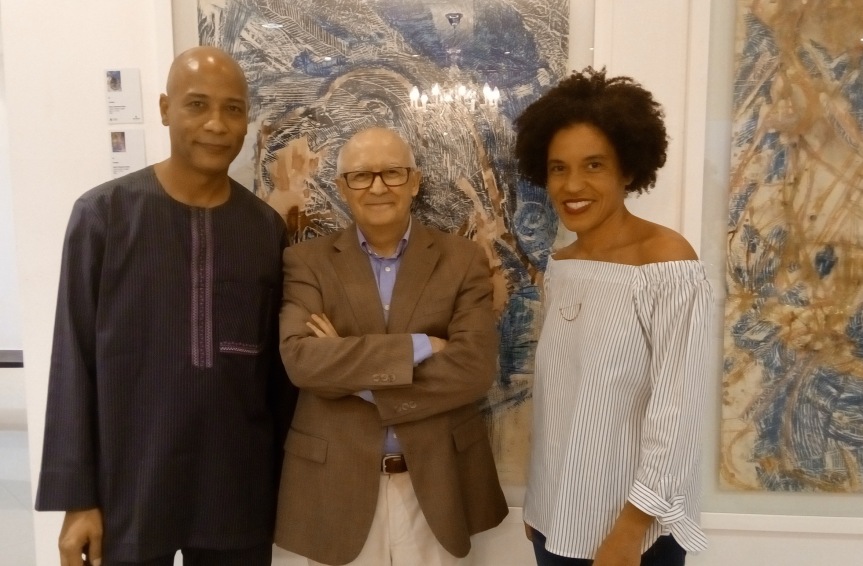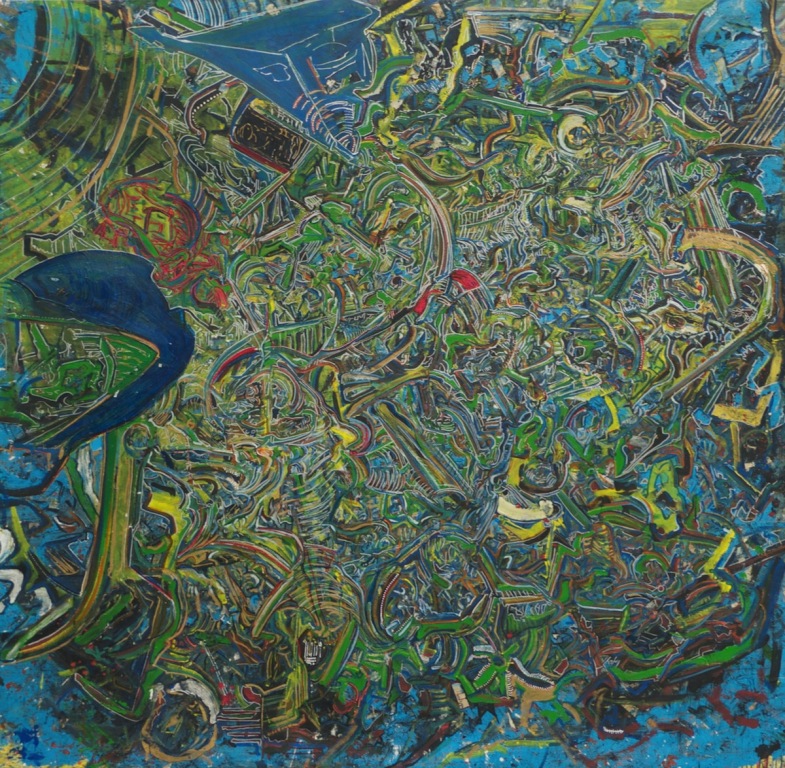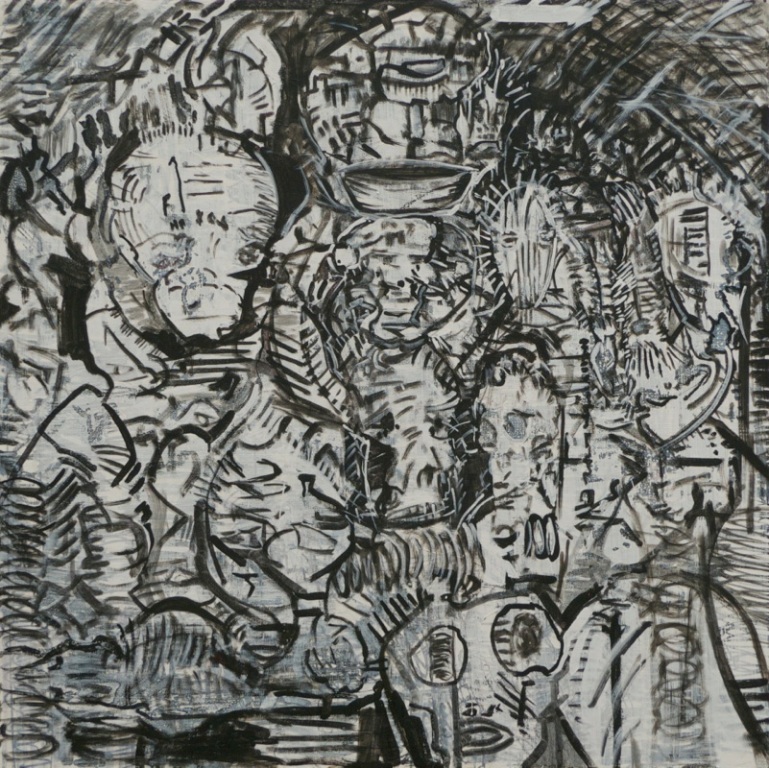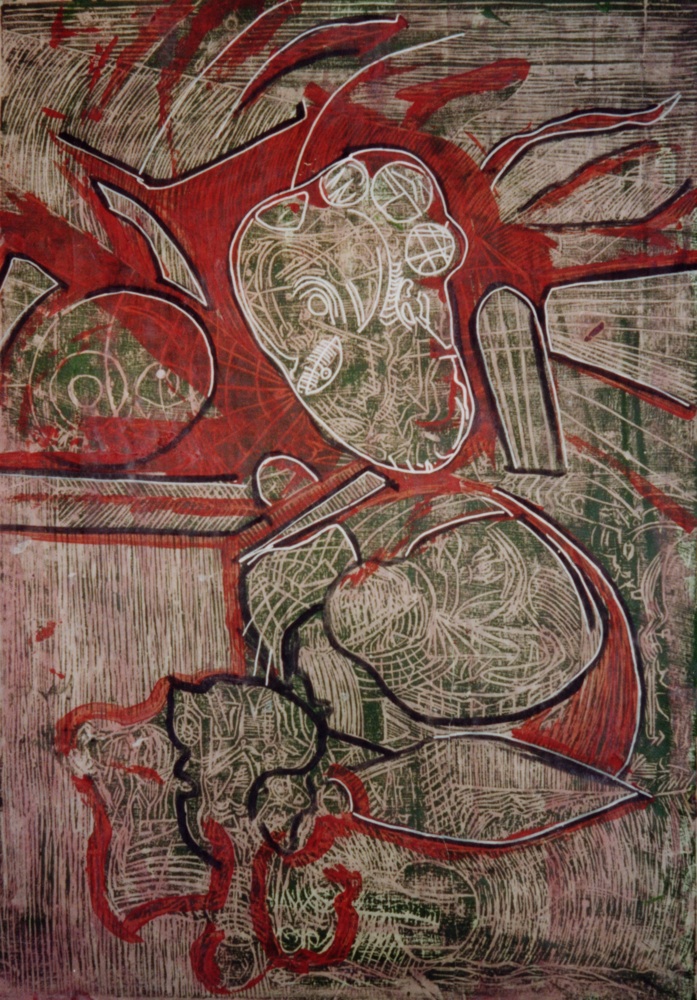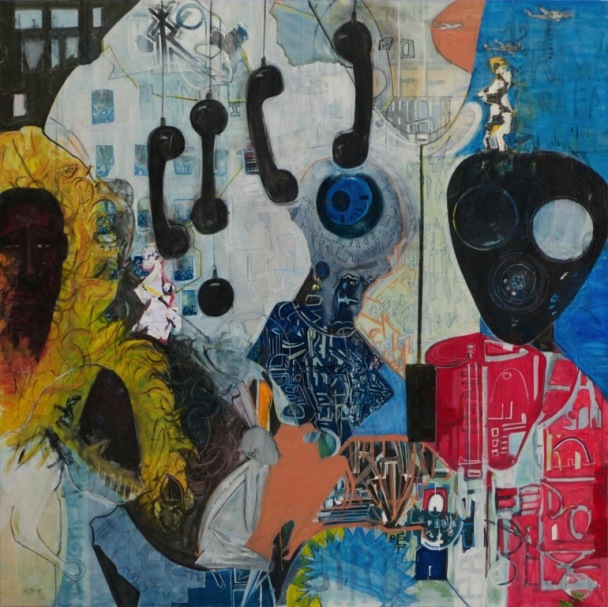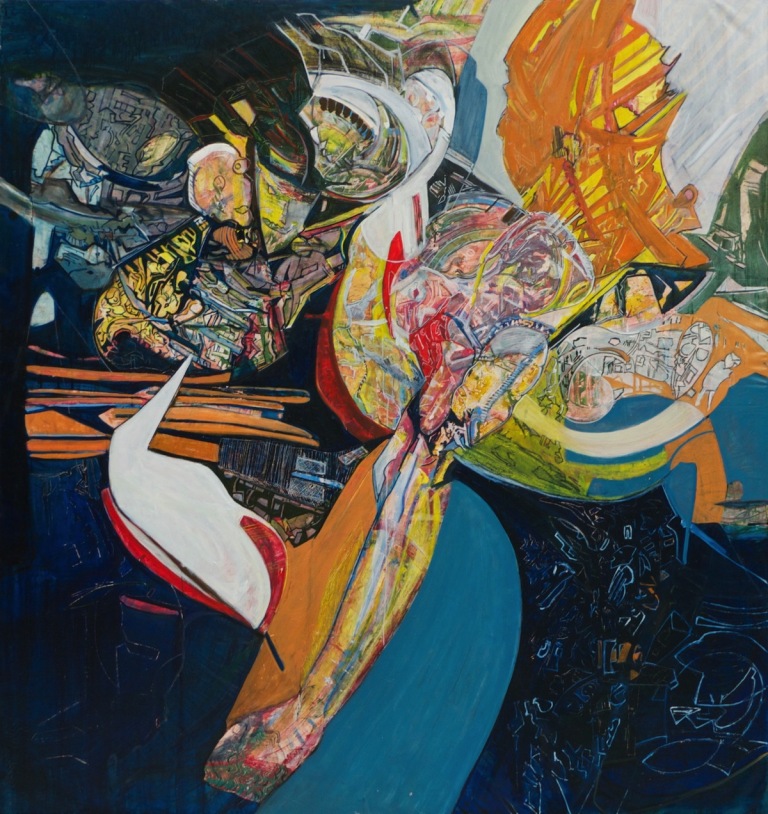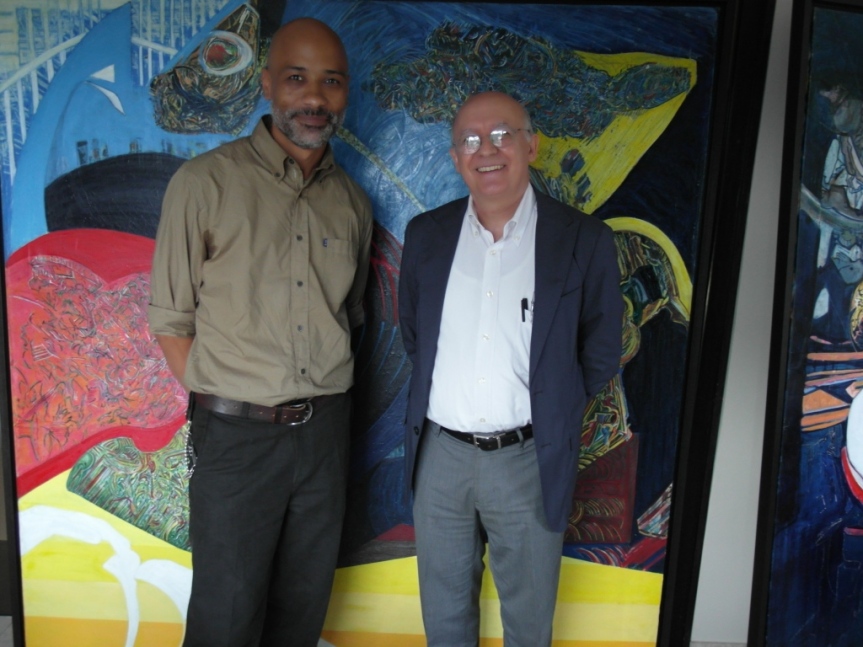A couple of weeks ago, Wura Natasha Ogunji and Raoul da Silva opened a join exhibition, organized and curated by Sandra Obiago, at Temple Muse in Victoria Island. The exhibition is still open till de end of April. The works that Wura and Raoul present to us in this exhibition couldn’t be farther from the shallow exoticism that still pervades large sectors of African contemporary art more than twenty five years since “The magiciens de la terre” (1989) and “Africa explores” (1991) exhibitions.

Definitely, neither Wura nor Raoul’s artistic practice is based on these tired clichés, on shifting artistic fashions or, much less, on the dictates and fads of the market. For Raoul, spontaneity, improvisation and the primacy of the gestural brushstrokes are central to his practice. In marked contrast, Wura’s approach is more analytical and rational. But, both are giving us something that comes from inside.
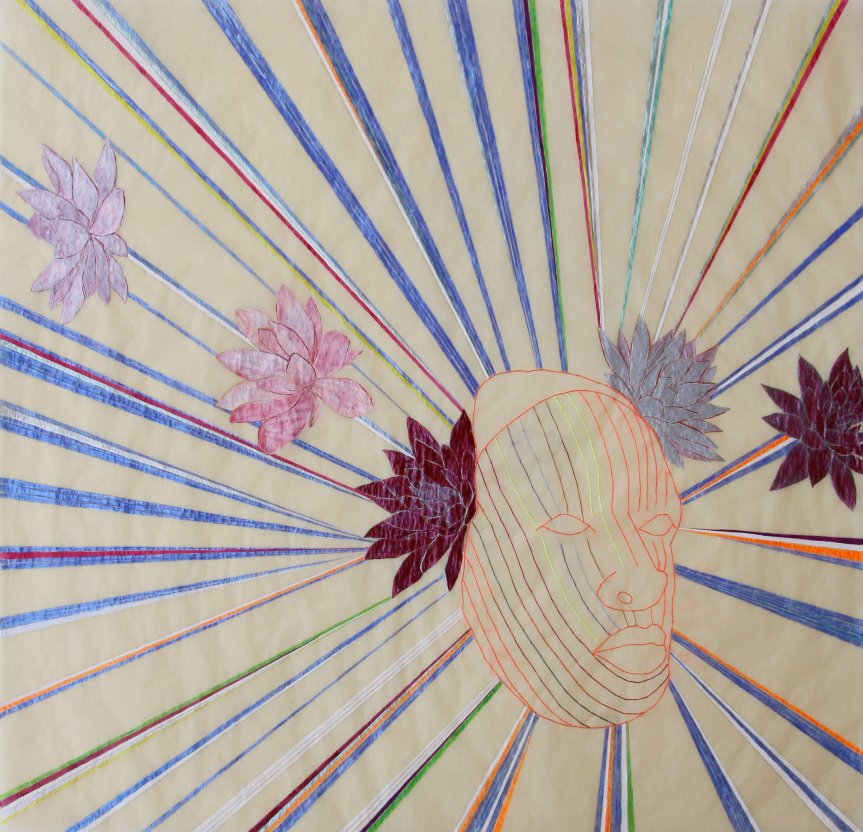
Wura and Raoul’s works are intensely personal, albeit strongly different. Wura was born in the USA and lived there till just a few years ago. Raoul lived his early years in Lagos but left the country at a very young age and did not settle back in Nigeria till also a few years ago. The fact that both of them have spent most of their lives outside Nigeria and both of them are of mixed parentage has made their artworks to be inextricably linked to their existential journeys. Their artistic itineraries have significant differences and this fact is reflected in their works. In them, it would seem as if Wura is trying to understand herself, while Raoul tries to express himself.
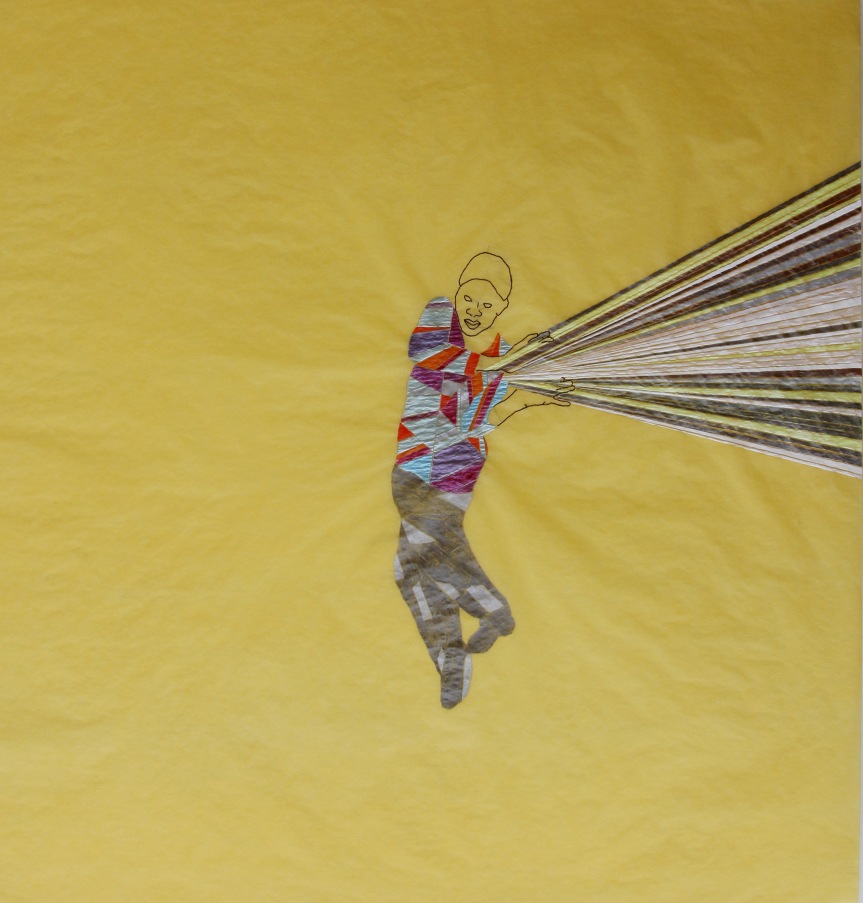
Wura’s works are not loud. They don’t shout at us, but they are works of unapologetic beauty and simplicity. Part of the reason why her small pieces on tracing paper work so well is the delicate, intimate, careful attention given to detail. She treats the fragile materials with respect and there is quality in each finished piece. The bright colour-rich inks on the translucent paper are subtle and restrained. The ordinary sowing thread becomes in her hands a metaphor of connections, of links, of relations, both physical and immaterial. The threadwork could have remained simply a craft, but it becomes much more.
In this exhibition, Wura presents a few works in which only geometric compositions can be seen. In their conceptualism, at first glance they appear as inexpressive, cold and detached, but it is the colour and, specially, the physical fragility of the medium that brings them to life. They stand out in way that the geometric constructions of Mondrian, for all their compositional perfection, are not able to achieve. The lines that delimit the coloured areas have always a focal point and, therefore, they indicate a direction. As a result, the surface of the pictorial plane on which they appear loses two-dimensionality and suggests tree-dimensional space. The fact that the flimsy paper is affected by the ink pigments makes the flat, weak surface become slightly uneven and adds a new suggestive layer of complexity. The hardness and precision of the lines is balanced by the lightness of the paper. She explains: I use tracing paper, the kind that architects use for preliminary drawings. I love the way the thread looks against it and the way the large sheets of paper move against the wall. It can appear fragile but it also has a weight to it. When I’m working on the drawings, especially when I’m sewing into the paper and because of its translucency, it feels quite filmic, as if I’m creating one cell of a filmstrip. We can talk about the meanings of the paper, but for me, it’s about a simple love of the material. This sentence offers perhaps a key to understand Wura’s works: “a simple love of the material”. But there is more than materiality and geometric composition. The frequent presence of the “Ife head” is an iconic figure that recurs in her works. It brings with it associations of the past, of tradition, of roots, of identities. But even if it is just a tenuous thread or a few lines and colour bands emanating from it as rays, the “Ife Head” is a metaphor for a link, a line of communication between different, but interrelated realities. And all this, said with softness, in an understated way. This fragility is one of the main strengths of Wura’s works on tracing paper.
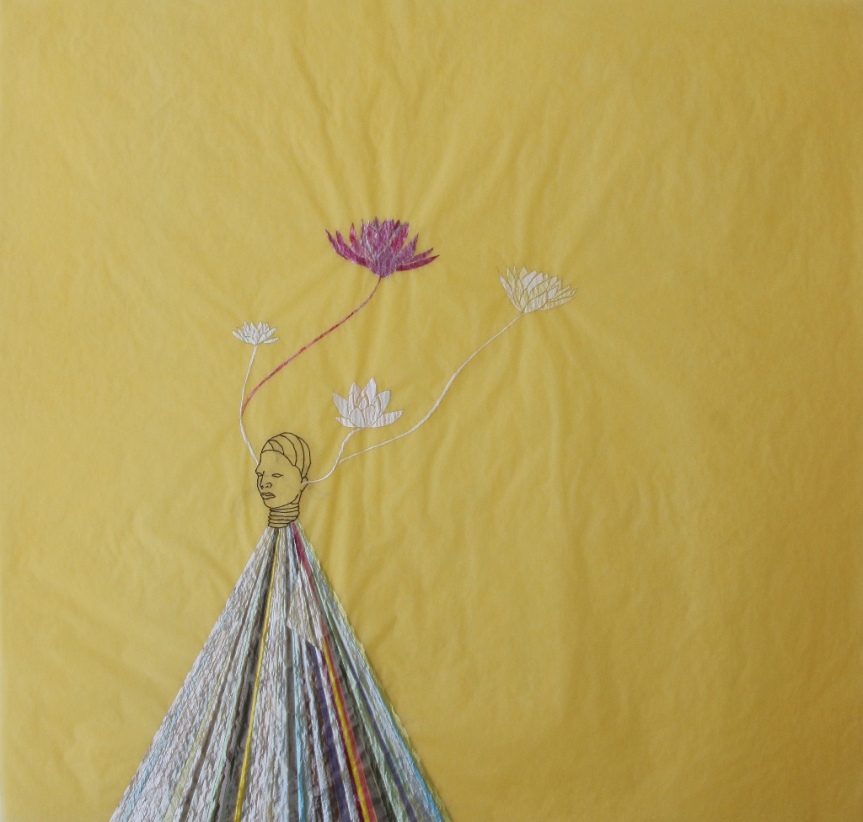
For years, there has been a recurrent concern in Wura’s works about connections, communications and associations, particularly, the transatlantic bond between Africa and the American diaspora. Her work “I brought you this”, in two pieces, with the Ife head on one, and a female figure in the other, both of them tied by a fragile bond of colour rays, exemplifies these concerns and successfully embodies these ideas into a physical form. Who brings what, to whom? In which direction is the communication? Does the “Ife head” –and all it represents- say something to the present, or is the direction of communication the other way, with the contemporary figure listening to what the past has to say?. Wura´s works are ambiguously open. Can we take Wura’s subtle references to history, memory, tradition and identity as an attempt to understand herself and help us understand ourselves in our specific cultural, temporal and geographic circumstances? There is no doubt, that her works question us.
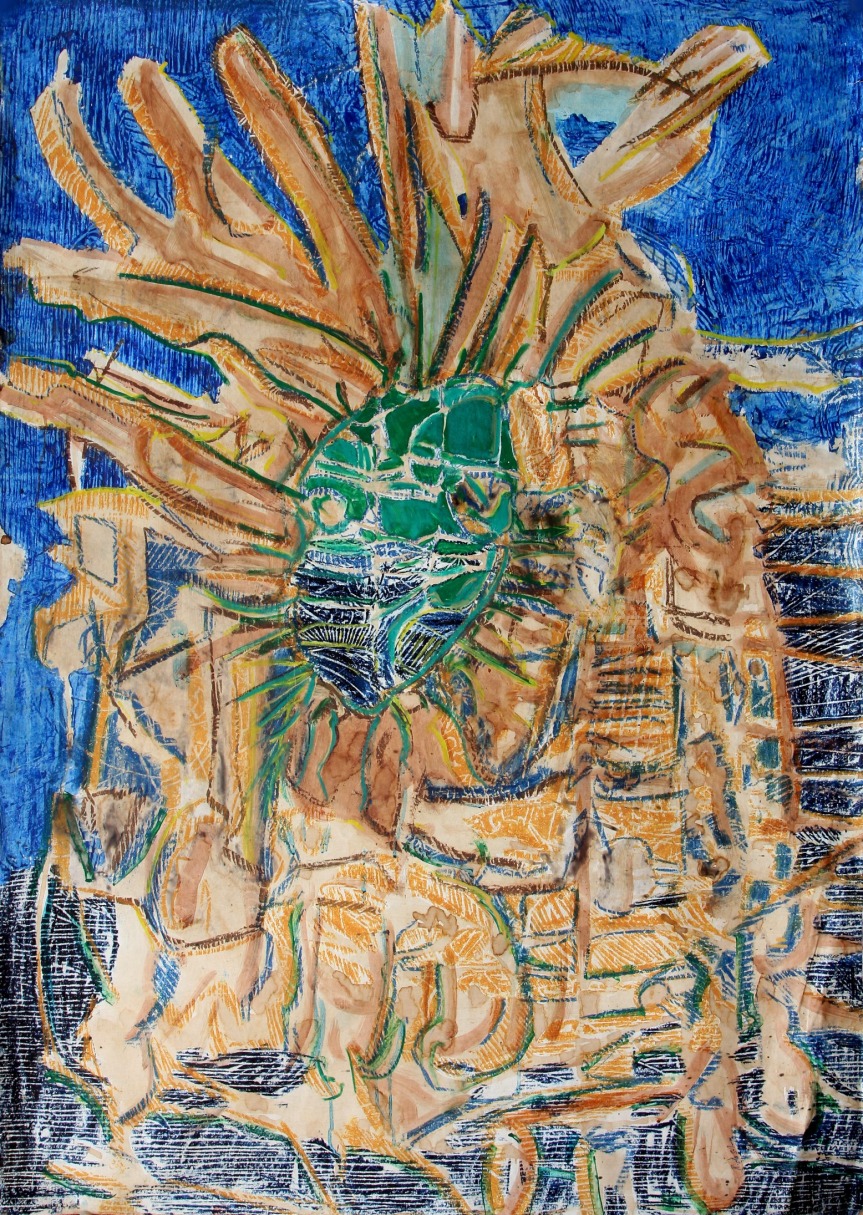
Though not directly influenced by them, Raoul’s works, with their forceful brushstrokes and the spontaneous approach to the painting process, have many features in common with the great German Neo-expressionist and gestural tradition of the second half of the 20th century: Gerhard Ritcher, Georg Baselitz, Anselm Kiefer, Jorg Immendorf. Markus Lupertz. Like most of these artists, Raoul looks inward for the sources of his works. Memories and instinct are important for him. The content, the subject matter, the communicative value of his works, generally matters less than the works themselves. The source of Raoul’s inspiration is intensely personal. He is an artist working within an expressionist tradition and method: spontaneity, expression, improvisation and gestural action are important in his works.
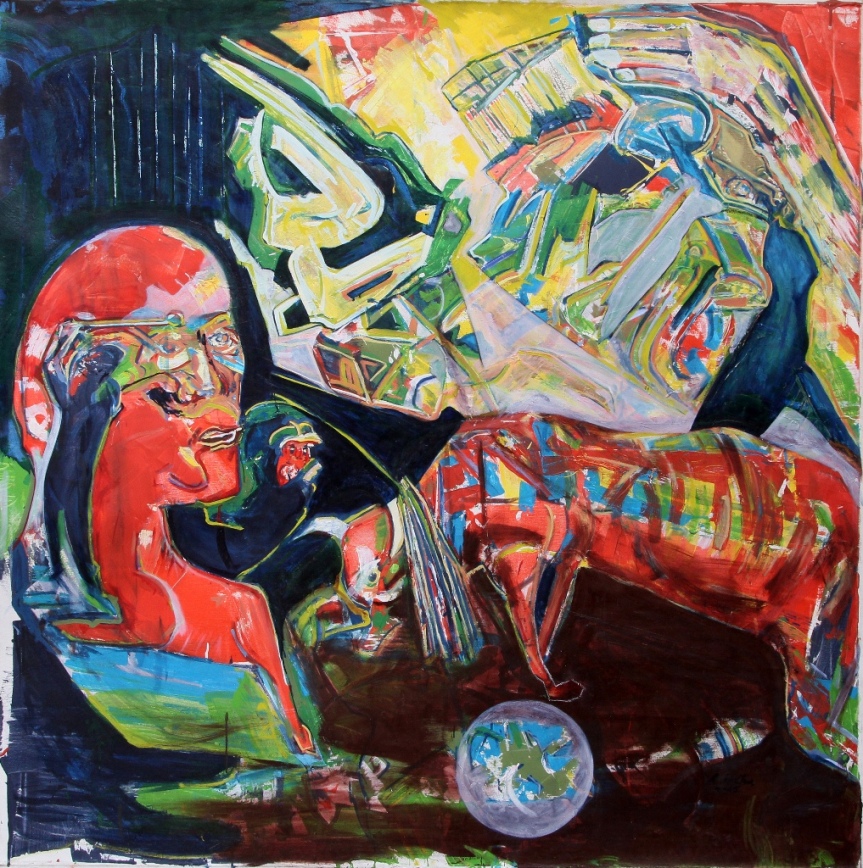
The process of interaction with the pigments and the canvas is central to his way of painting. Each painting, each drawing, is “revelatory” of inner forces, desires and memories. As he says: in my way of working, the intuitive and impulsive work together as well as against the rational, reflective and explorative side, which helps to bring that balance. In the moments of outbursts, pouring out, and coming from the feeling, it’s having that trust and faith that all these memories, which are very abstract and not specific, but even just in the color choice comes from memories which I choose not to pinpoint or overanalyze. Raoul’s works develop from inside out. Their formal strength comes from within. That’s why they are so unmistakably personal. To look at Raoul’s works the spectator does not need to be distracted by a search for meaning, contextualization or conceptual justifications. These are works to be “enjoyed”, rather than to be “comprehended”.

His paintings oscillate from decidedly abstract compositions to those filled with expressive biomorphic references, but they seldom try to offer a window into the world as all the traditional western art did for centuries. They are self-referential. There is randomness in his “coffee” works, in which the unpredictability of the shapes is part of the process. For Raoul, the significance of the process is at the core of his works. His colours, lines, stains and forms cover the whole space. In contrast, Wura lets the delicate architectural drafting paper, of subdued yellow tint, take most of the pictorial space. Her figures, made of stitched lines and colour, float in space while Raoul’s works fill the canvas with an outpouring of gestures coming from within. Different as these two artists are, there is a shared sincerity and genuineness in them. Their works offer a rare opportunity for us to experience art that goes beyond the merely retinal and decorative. They engage our senses, but they also engage our minds. In the commercialized atmosphere of the Lagos artworld this is not a small achievement. We are grateful for that.
Jess Castellote
